- Getting around Lijiang. Dont stay in the Old Towns more than 2 days, there is nothing to do. KRISS Oct 9, 2013 05:46
- 2013 Beijing Temple Fair BENNYLAU Feb 26, 2013 03:29
- Malaysian traveling from KUL - LAX vis Shanghai PVG ZATI_DY Jan 3, 2013 20:15
Hightlights of Haikou
- Views: 5387
- |Vote: 0 0
- |Add to Favorites
- |Recommend to Friends
The bus station in Sanya 三亚 is bristling with the mid morning melee of people and things all trying to be somewhere else but I don’t wait long for my bus to leave. Broad landscaped boulevards lined with new residential low-rise and open spaces, soon give way nursery greenhouses and rice paddies - in the distance all around are small wooded peaks. The four lane divided expressway climbs slowly into the hills and the rice paddies make way for papaya, mango and pineapple plantations. Sheets of sugarcane form a lazy patchwork across the valley flats.
Hainan’s highway network is extensive and includes two major routes - one that circumnavigates this little teardrop in the southern ocean, loosely following the coastline and another that threads it way through the rugged central highlands. My plan is to follow the east coast north to Haikou 海口, the capital and my base for the next few days before making my way south again down the west coast and through the interior. From the elevated bus window I can see far more than I anticipate.
For mile after mile the road hugs the coast, departing only briefly to skirt behind rugged rocky headlands and small coastal villages. We pass countless pristine beaches, their fringes of golden sand swept gently by crystal clear waves. Granite boulders mark the headlands and lie haphazardly about the beaches and in the water like petrified creatures of the sea – a turtle, a dolphin or a whale. The imagination is the limit. The gentle sea breeze stirs in the coconut trees and coastal she-oaks standing windswept on broad low dunes that skirt the beach.
The evidence of the islands violent volcanic history can be found almost everywhere, from the pockets of deep red fertile soils, the granite boulder strewn coastline and the crater pocked Geo - park near Haikou. In this year round tropical heat, vegetation whether it be generic or exotic grows quickly - unruly and unkempt - giving the air of a long neglected, and overgrown garden. The further north we go the drier and less prosperous appears the landscape. Lush tropical vegetation gives way to more stunted scrub, plantations of pineapples and the more succulent fire dragon fruit. Farmhouses, all identical are small, tiled in glossy white, their low-pitched roofs extending over narrow covered patios giving just a little relief from the torrential rain and heat of summer.
Haikou, the provincial capital is a little overshadowed these days by Sanya. Like two sisters, the younger, sultry, southern Sanya is turning heads with her new found fortunes, fame and fashion. An older, faded and jaded, nothing to prove, Haikou in the north offers a much slower pace, a little more history, and far better value for money during the overpriced Spring Festival holiday week. Beaches are not her most prized possession but there is a variety of other attractions to interest everyone for a day or two in and around the city. I booked into one of Haikou’s youth hostels around lunchtime and while they seemed to have lost my reservation in the absence of the manager, it is of no real concern. The girls with the unlikely names of ‘Swallow’, ‘Leaf’, and ‘Mosquito’ give me a lovely room and directions for taking the bus downtown.
While many of Sanya’s streets appear to be lined with gold, Haikou’s streets are lined with something far more practical - coconut trees. This city in the wet sub-tropics, even in winter is basking in the warm midday sun and the coconut shaded footpaths are a welcome relief as I go in search of lunch. A couple of blocks down the street I find one of those nice little ‘hole in the wall’ diners where four other hostel guests from Britain have just finished ordering their meal. When I travel solo I usually order just one or two dishes - scrambled egg with tomato and cucumber with crushed garlic – they are both tasty and nutritious, easy to say and hard to misunderstand.
I order my meal and eat alone making small talk with the proprietor. I have just finished my meal and sipping my tea as I complement the chef. I’m in no hurry to leave when I am handed a phone and told that the call is for me. Rather incredulously I look at the young man holding the phone out towards me thinking ‘There’s a call for me. Who would be calling me on his phone? How does anyone know I am here?’
With these questions rushing through my mind I take the phone, answering in my best Chinese. My tentative “wei” is answered with ‘This is David speaking.’ in clear fluent English. As I swallow my surprise he goes on to explain that his older brother (or perhaps he’s a cousin) owns the diner and would firstly like to thank me for eating there and secondly to wish me a good time in Haikou. I can hardly believe my ears. After thanking David for translating this information I hand the phone back to its owner unable to wipe the smile off my face. I look across at the other guests and we smile knowingly. They have not received this special welcome. It’s this kind of experience that makes travel in China so interesting and a strange city much more personal and fun.
Haikou means ‘mouth of the sea’ and is an old port built at the mouth of the Nandu River with ferries to the mainland ports of Hai’an, Zhanjiang, Shekou (Shenzhen) and Beihai. In the tropics high temperatures, humidity and storms take their toll. A stroll through the narrow streets of Haikou’s old port district with its mix of Chinese and Portuguese architecture reveals the decay. Years of neglect in this tropical heat have stolen the life – those soft pastel colours - from these once proud and stately colonial buildings. Faded reliefs on drab grey facades, rusty wrought iron rails, and tattered timber shutters cry out for a make over.
Across the river, Haidian Island 海甸岛, where my hostel is located is bristling with nightlife, bars, clubs and restaurants. Broad tree lined boulevards and new residential communities have changed the lay of the land. Although no longer a sleepy little fishing port, you’ll still find many traditional timber fishing boats moored or at anchor in the rivers and harbours of the city. Getting around Haikou by bus is both cheap and easy. In downtown Haikou a small park, surrounding two small lakes Xihu 西湖 and Donghu 东湖 recently landscaped offers a pleasant break from the heat.
Out by the East Bus Station are several of the cities more famous historical sites. The Wu Gong Ci Temple is complex dedicated to five Tang Dynasty officials banished to exile here when they dared to criticize the government of their day. The highly regarded Song Dynasty poet, Su Dongpo also spent his final years in exile here. What I found of considerable interest is the Qiongtai Shuyuan on Wenzhuang Rd in Qiongshan District. This 280 year old academy looks little changed from the days it was first established. The Tower of the God of Literature, Kuixinglou still stands within the cool and quiet grounds of this once famous centre of learning. It is believed to have been built in 1705 in memory of Qiu Jun, the most gifted scholar of Hainan.
And for something completely different, Hainan’s volatile volcanic history is now showcased in the recently opened Geopark at Shishan just 15 kilometers to the southwest of the capital. The dormant volcano cluster is a rarity in China with more than 40 volcanoes of different kinds and over 30 lava tunnels, which contain large resources of quality mineral water and thermal springs. Of course for the locals this is nothing new. The rich volcanic dust has provided a soil rich in nutrients for farming and the soft basalt rock has been fashioned into building materials and even household utensils.
With a warm tropical climate and rich soils it’s not surprising that much of the natural vegetation has survived and many ancient and rare plants can be found along the creeks within the park. These forests account for more than 70 percent of the total land area in rich contrast to the villages and farms in the craters of Leiqiong Geopark.
For first time travelers to China, Hainan offers a wonderful introduction to Chinese culture, history and language encapsulated in such a small and geographically diverse island. From the temperate highlands of the interior down to secluded pristine beaches, isolated villages of minority groups who seldom see foreign visitors, rare and endangered animals, forests and falls, small fishing villages, ports and farming communities, superior seafood and delicious tropical fruits, Hainan has something for everyone.
Hainan is the only province in China where foreigners are permitted to hire and drive a vehicle for a self-driving holiday. With no need to have a Chinese Drivers License and relaxed visa application procedures is it a delightfully tourist friendly destination catering to all budgets from world class International Hotels and Golf Courses to budget backpacker hostels. Hainan is one of the more relaxed places within China to drive and it’s difficult to get lost.
A week or ten day driving holiday, with good roads and many off the beaten path locations to explore and peoples to meet is a unique opportunity in China these days. What better place to begin than in the islands capital of Haikou.



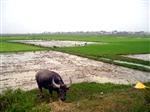
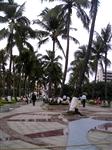
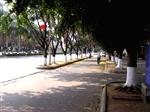
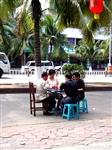
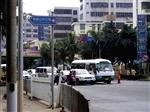
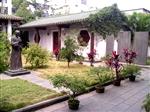
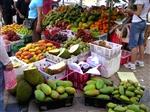
 Copyright © 1998-2025 All rights reserved.
Copyright © 1998-2025 All rights reserved.